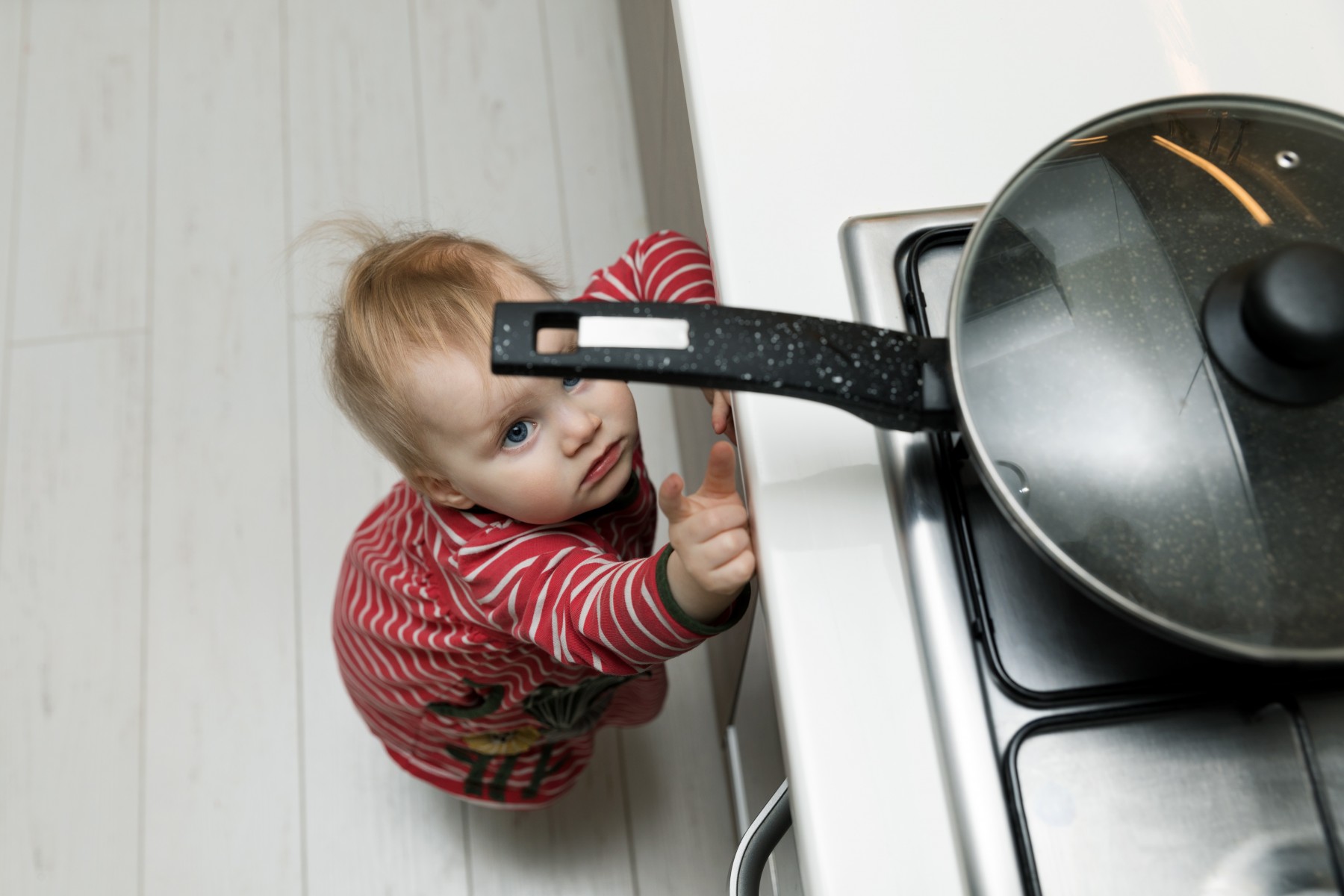3 Most Common Childhood Burns: How to Prevent and Treat Injuries
Diane Rash, manager, APRN, Surgery and Burn
Nearly 250,000 children are seriously burned and need medical attention in the U.S. every year.
I’ve been an APRN for more than 18 years and the most common childhood burns hasn’t changed over the 15 years I’ve worked in the burn unit. Here’s a look at the trends and how to prevent injury.
Scalds
The number one burn we treat is scalds from spilled food and beverages, and most of the injuries happen while the child is using the microwave. We often care for 8-10 year olds who’ve been burned while pulling ramen noodles (or other hot liquid items) out of the microwave, which is often located above the range. Kids will stand directly under the microwave, on their tip toes and reach up to grab the food. When it’s too hot to hold, they drop it and it splatters down their face, chest and arms. To prevent these injuries, supervise children that aren’t tall enough to reach microwaves up high.
Younger children tend to get scalded when they pull hot items off the stove or countertop. When cooking, use the back burner and turn pot handles away from the edge. Also, keep crockpots away from the edge of the counter and avoid plugging crockpots into the side of the island. Children have been injured grabbing the crockpot or getting caught on the cord and pulling it down on their head, which causes significant burns.
Grease burns are the most common way teenagers are burned in the kitchen. The teenager will be frying food and the grease gets too hot and can splatter or it can ignite. Not wanting the kitchen to catch fire, the teenager will grab the pan and try to take it outside and is burned in the process. The best thing to do is clean up grease spills right away and smother a pan grease fire with the lid. (Do not grab the pan or try to put out the fire with water.)
The bathtub is another place where young kids can easily get scalded. Set the hot water heater to less than a 125 degrees to prevent burns.
Contact Burns
A contact burn is when a child is burned touching a hot object. We always see an increase in fireplace glass burns the first week of November after families turn on the fireplace for the first time during the fall season. Fireplace glass can reach temperatures in excess of 200 degrees Fahrenheit and toddlers just learning to walk can fall into the glass and burn their hands within seconds.
Another place to watch out for is the kitchen. Little kids will crawl over and touch the hot oven door when it’s open, while other kids will reach up and touch the hot stovetop burner. Some parents and grandparents will also set children on the counter to help with cooking and the child will crawl or walk across the hot stovetop. The best prevention is keeping kids out of the kitchen when cooking on the stovetop or opening the oven door.
Other contact burns we treat are caused by clothing iron and curling irons. Keep these items far out of reach of young hands.
Seasonal Burns
You can tell what time of year it is by the acute burns we treat. Now that it’s getting colder, we’ll see fireplace, space heater and fire pit burns. When using a fireplace, make sure to use a screen that covers the entire opening and the fireplace glass. Use kid-friendly space heaters that can be kept cool enough not to burn fingers and hands, even on the hottest setting. Supervise children around fire pits and remember that even when the fire has been extinguished hours earlier the coals are still hot. Hot steam vaporizers are another hazard that can cause steam burns.
In the summertime, we see sunburns, burn injuries from fireworks, and burns from the mufflers on ATVs and golf carts.
Treating Burns
If a child is burned, soak the burn in cool/room temperature water, but do not use ice. Ice will sting and can cause the burn to worsen. After flushing the burned area for a few minutes, cover the area with a sterile non-adhesive bandage or clean cloth to protect the burn from friction and pressure. Over-the-counter medications like Motrin or Tylenol can be given to children (if they’re old enough) to help relieve the pain. Ibuprofen should not be given to children under 6 months of age. Consider using an OTC topical antibiotic ointment for burned area. Minor burns will usually heal without further treatment.
If the burn is more severe, take the child to the Emergency Department immediately. Always remove the diaper in young children that have been scalded. Diapers are meant to be absorbent and can retain heat from scalding liquids. Do not remove burnt clothes unless they easily come off. Cover burns with clean cloth or a dry clean sheet, but do not cover the wound with ointment or pop blisters.
After the Burn
It’s important to protect new skin after a burn has healed. Be careful not to bump or scratch the healed burned area, because new skin can easily be damaged.
Keep the area protected from sun exposure as much as possible and use sunscreen of at least SPF 30 and reapply every 2 hours when outside. The new skin can be easily burn.
Apply fragrance free lotion several times a day and as needed throughout the day. Use a little pressure to massage the lotion in small circular motions until the cream is blended into the skin. This should be done several times each day to help soften and flatten scar tissue.
Learn more about Burn and Trauma Care at Children’s Mercy, the only designated Level 1 Pediatric Trauma Center and the only burn unit devoted exclusively to pediatric patients between St. Louis and Denver.

